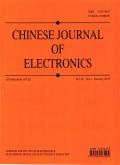A Combination Model of Periodic and Non-periodic Events for Temporal Knowledge Graph Event Prediction
IF 3
4区 计算机科学
Q3 ENGINEERING, ELECTRICAL & ELECTRONIC
引用次数: 0
Abstract
Temporal knowledge graph (TKG) reasoning aims to predict missing facts or future events at given timestamps and has attracted more and more attention in recent years. Existing TKG reasoning methods mainly focus on the interactions between entities and ignore the associations between events where the entities involve. In addition, the characteristics of different types of events have not been studied and exploited, which reduces the performance of event prediction. To address these problems, this paper proposes a combination model of periodic and non-periodic events (CM-PNP). Specifically, there are two basic components designed to process different types of events. The periodic component of CM-PNP learns the recurrent pattern of periodic events and encodes the temporal information in the manner of timespan to prevent the unseen timestamp issue. The non-periodic component of CM-PNP introduces extra information (e.g., entity attributes) to represent non-periodic events, and predicts this type of events according to the related historical events. A combination model of multiple sub-models that focus on encoding different parts of the event is used to improve the performance of single model. The periodic and non-periodic components are combined by a gate block. The experimental results on three real-world datasets demonstrate that CM-PNP outperforms the existing baselines.时间知识图事件预测的周期与非周期事件组合模型
时间知识图(Temporal knowledge graph, TKG)推理旨在预测在给定时间戳上缺失的事实或未来的事件,近年来受到越来越多的关注。现有的TKG推理方法主要关注实体之间的交互,而忽略了实体所涉及的事件之间的关联。此外,不同类型事件的特征没有得到研究和利用,这降低了事件预测的性能。为了解决这些问题,本文提出了一种周期与非周期事件组合模型(CM-PNP)。具体来说,有两个基本组件用于处理不同类型的事件。CM-PNP的周期分量学习周期事件的循环模式,并以时间跨度的方式对时间信息进行编码,以防止不可见的时间戳问题。CM-PNP的非周期组件引入了额外的信息(如实体属性)来表示非周期事件,并根据相关的历史事件预测这类事件。采用多个子模型的组合模型,重点对事件的不同部分进行编码,以提高单个模型的性能。周期分量和非周期分量由一个栅极块组合。在三个真实数据集上的实验结果表明,CM-PNP优于现有基线。
本文章由计算机程序翻译,如有差异,请以英文原文为准。
求助全文
约1分钟内获得全文
求助全文
来源期刊

Chinese Journal of Electronics
工程技术-工程:电子与电气
CiteScore
3.70
自引率
16.70%
发文量
342
审稿时长
12.0 months
期刊介绍:
CJE focuses on the emerging fields of electronics, publishing innovative and transformative research papers. Most of the papers published in CJE are from universities and research institutes, presenting their innovative research results. Both theoretical and practical contributions are encouraged, and original research papers reporting novel solutions to the hot topics in electronics are strongly recommended.
 求助内容:
求助内容: 应助结果提醒方式:
应助结果提醒方式:


